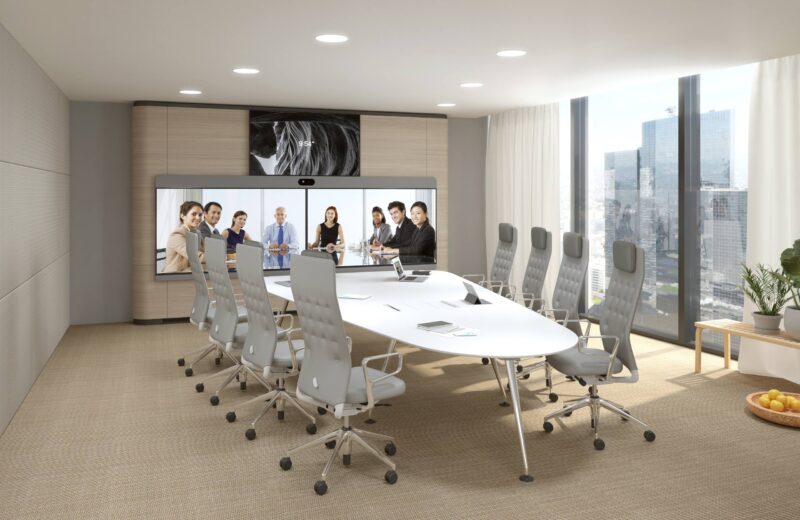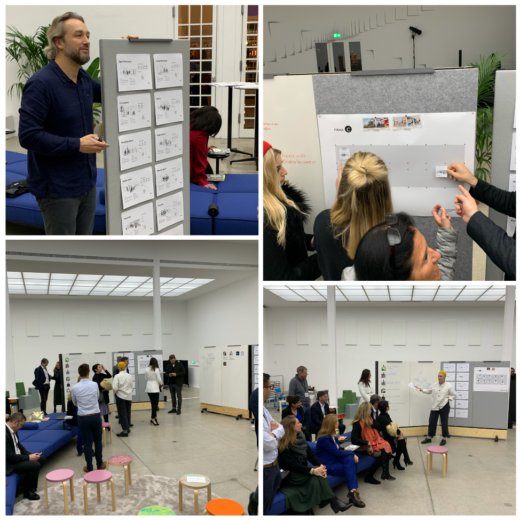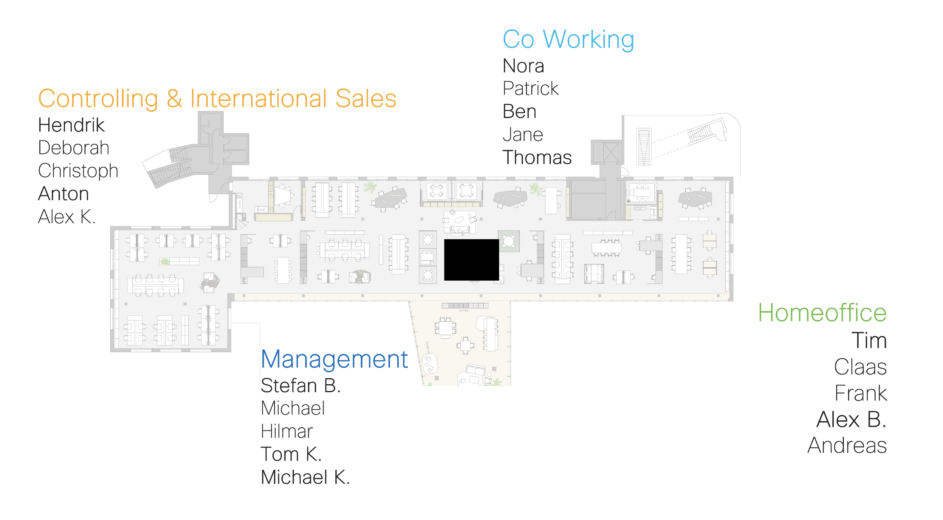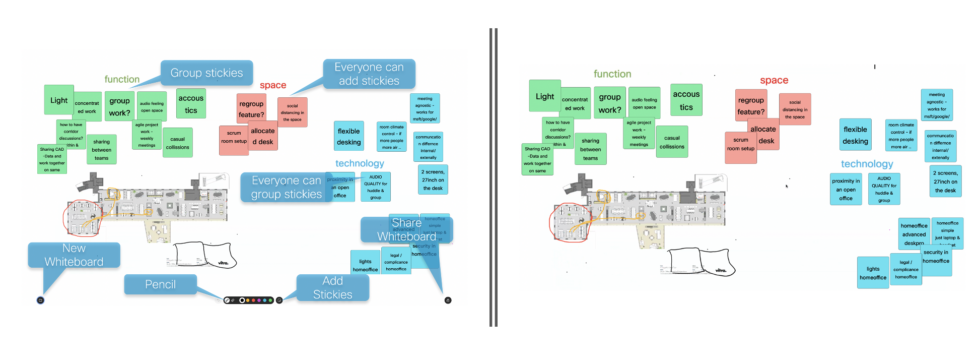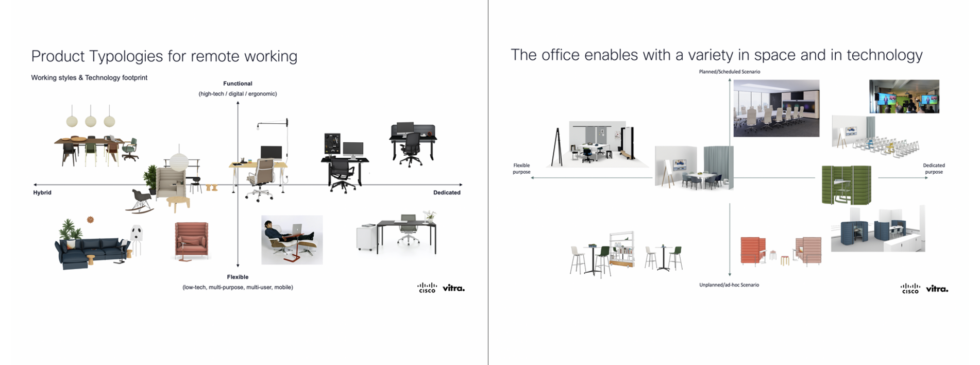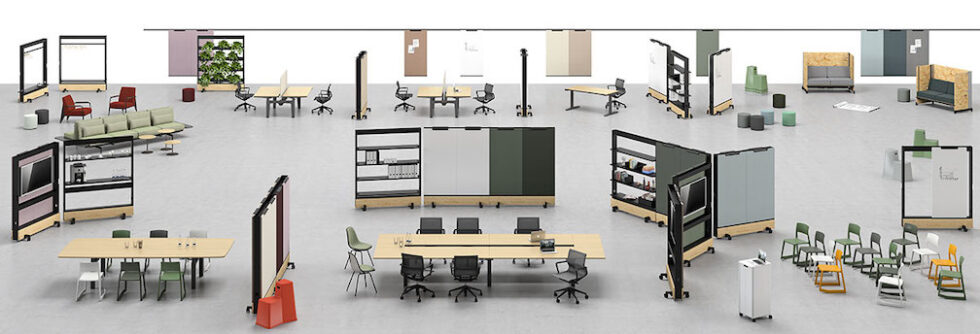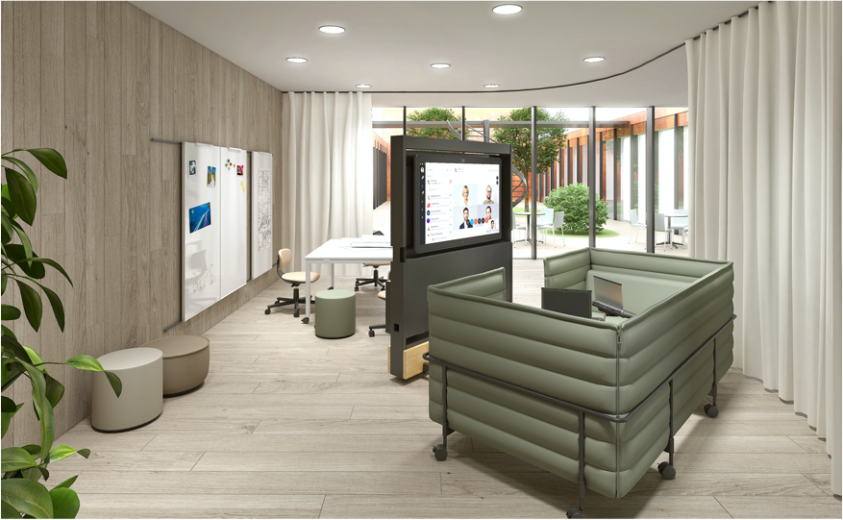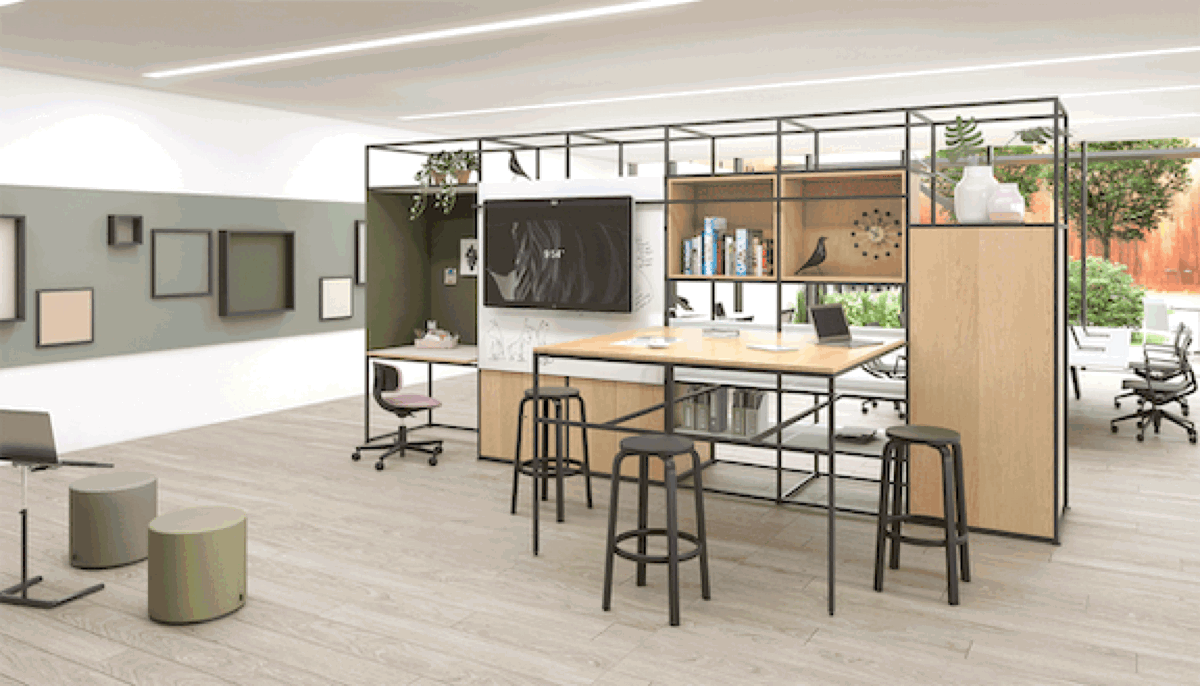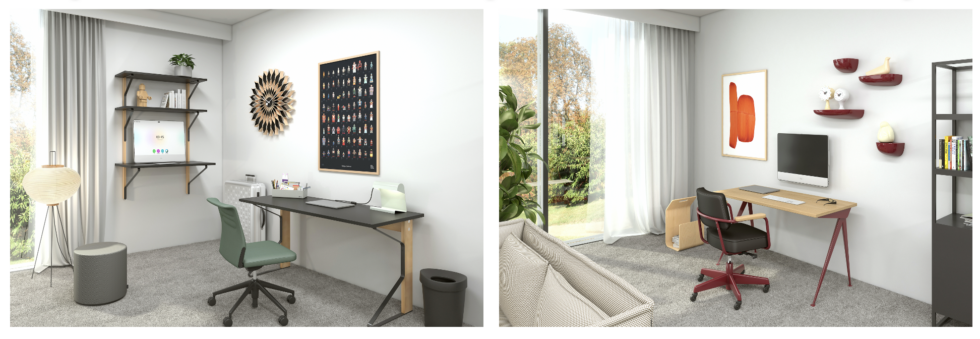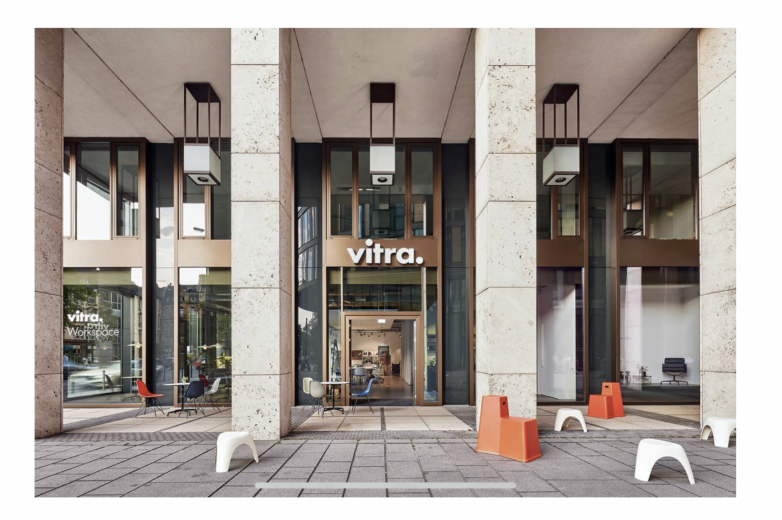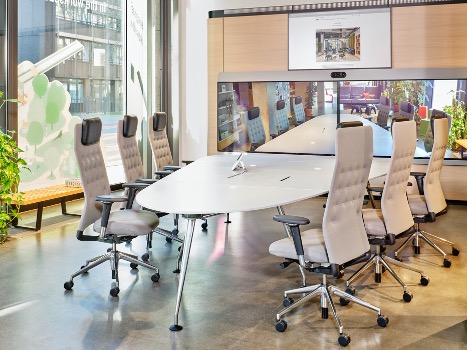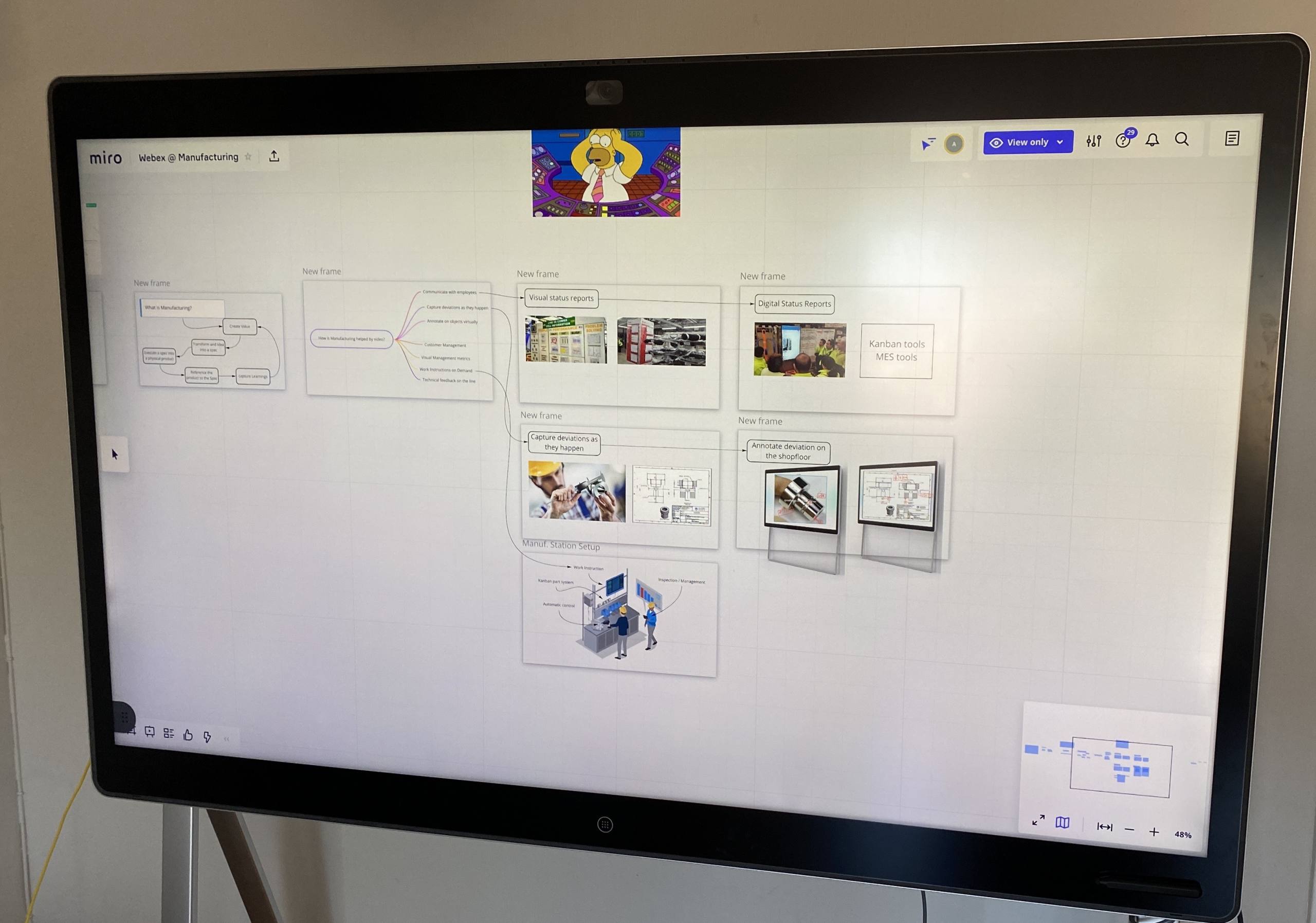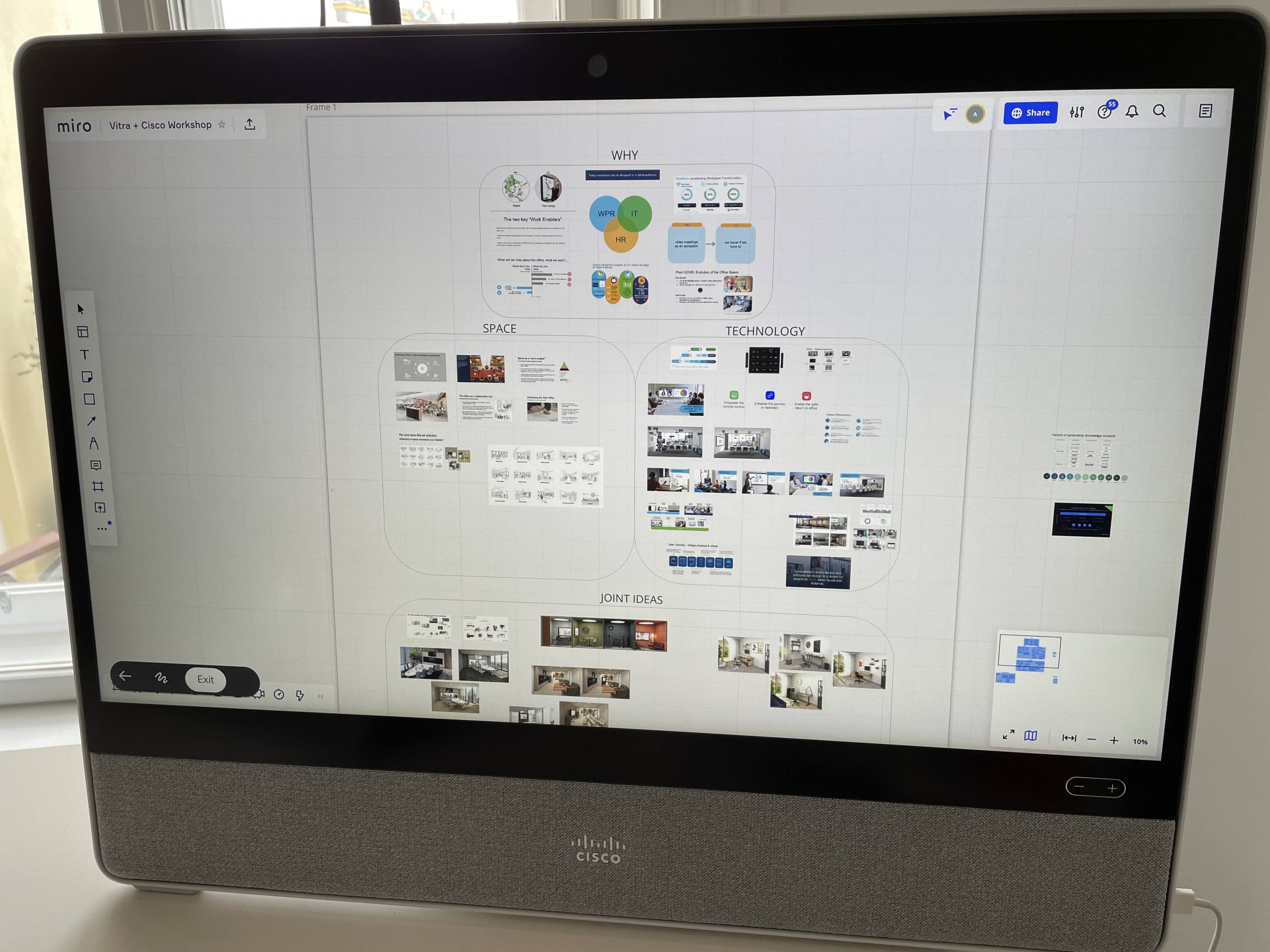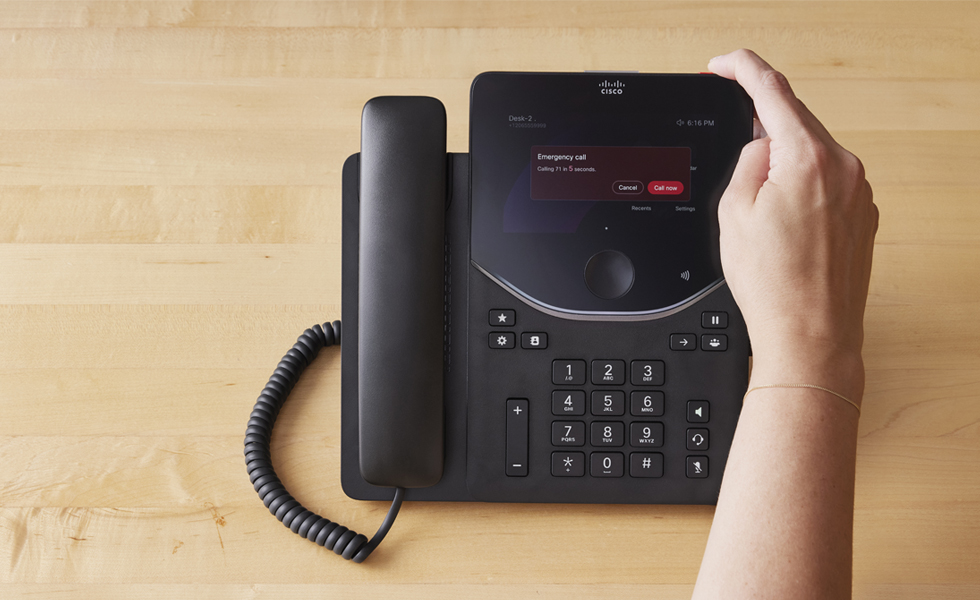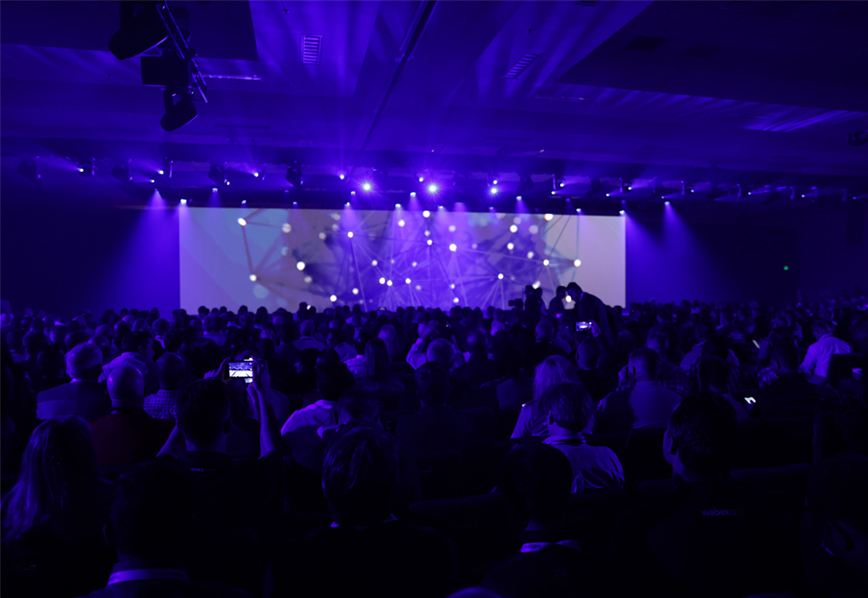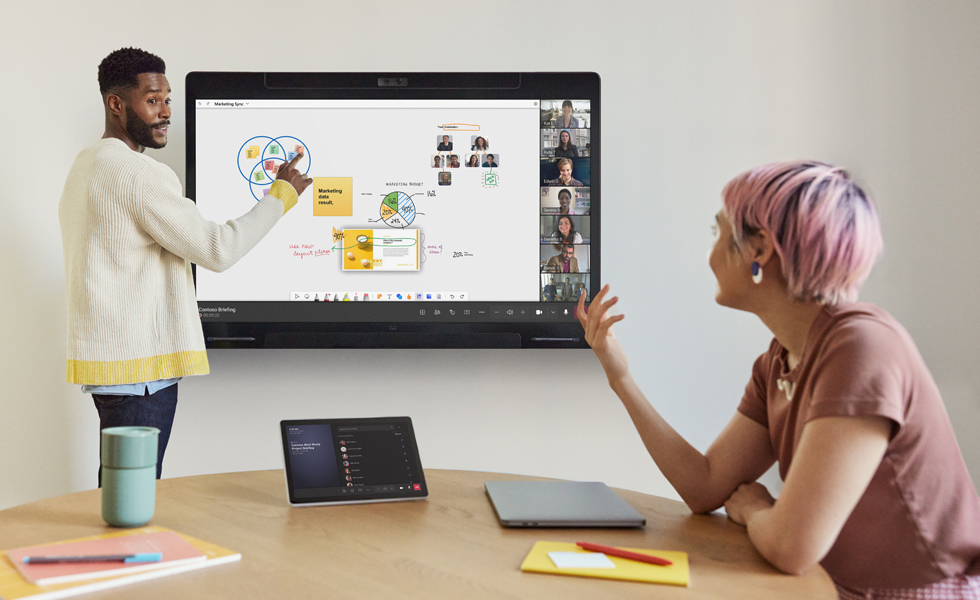Meeting fatigue, co-designing, and technology
The best way to fight virtual fatigue is doing what we do in the real world, don’t “die by PowerPoint,” do better – Co-Create!
This is a story about co-designing, running virtual workshops, and co-creating with teams across companies across locations.
Last Winter, I was invited to an event hosted by Vitra that took place in Vienna, with the schedule: “workshop – decoding the office.”
The organizers told me to expect a “design thinking” session with about 150 people. Having facilitated co-creation workshops myself, I was wondering how this was going to work out. And I must admit, it was a great experience to witness how Tim Reusch (Head of Vitra Design Studio) pulled it off by using an “event” version based on his methodology.
Design thinking- joining space and technology
After the session, Tim and I discussed the importance of the interlock of space and technology. During that time, Vitra and Cisco were already collaborating on the Cisco Webex Room Panorama, providing the ultimate immersive video conferencing experience for the modern C-suite.
We agreed on the need to take our partnership one step further, by joining company forces to discuss the marriage of space and technology, using Tim’s design thinking methodology.
Therefore, our Head of Design for Webex Devices, Sondre Ager-Wick, came on board to support. Time got Hendrik Woywod from Vitra Global Sales involved to assemble a diverse group for the workshop.
Webex and Vitra join together for a virtual design thinking workshop
After a few follow-up meetings in early 2020, we agreed to invite 10 participants from each company and aimed for two slots – a kickoff at the Vitra Campus in Weil am Rhein, Germany, and a second slot in the Cisco Executive Briefing Center in Oslo, Norway. We were ready to start, but then all of a sudden the entire world went remote overnight.
The challenge was obvious: We still wanted to run the workshops and asked ourselves whether it was possible to do this virtually – using Webex? And it sure was.
The goal
We had one goal in mind, which was to transform the office. To facilitate the workshop, we split up into four different working groups to focus on the different areas.
The key questions for the Space architects and Technology experts were:
SPACE: When people walk through your office, do they really want to work there? If you can answer “yes” to this question, then you have reached a level of psychological comfort and safety.
TECHNOLOGY: Assume 50% of your co-workers are remote. Can you still answer the previous question with a definite “yes”?
The workshop
Since Webex is designed for collaboration with distributed groups, we onboarded the Vitra participants to Webex and created a team structure for the plenary session using a Webex Space. The joint introduction session was followed by splitting up the group into four small and diversely staffed working teams.
You find your chat messages there, your documents and files, and of course, you can ad-hoc start a Webex meeting. The key was the possibility to have the whiteboarding templates integrated into the platform.
We started with the architectural layout of the new office.
Any breakout group member can edit the whiteboard in real-time from any location, and editing can be done by teams offline. A single meeting can be joined from multiple devices. For example, a laptop is being used for the meeting, while the iPad is used for whiteboard edits.
Templates and “Flipchart-like” drawing tools, “stickies” – all the tools you are familiar with from design thinking are included. The Webex Architecture allows flexibility to use all of these across companies and locations.
The facilitator is highly flexible in the reviewing progress on each of the whiteboards without joining every single breakout meeting.
When we run these kinds of workshops within Cisco, most employees prefer to join with their Webex devices from home. In this workshop, we were a very distributed group of people joining different locations using different technology. Therefore, it was great to see how technology became an enabler to entirely focus on true co-creation from leveraging diverse views and technologies.
Click here if you wanna see how this looks with a “fancy” device
Some workshop impressions:
Each team assigned a team lead and then got to work on their schedule for four weeks. Afterward, each group presented their outcomes to the overall panel.
Afterwards, it was great to see the amazing results of this invigorating collaboration; as an example, take a glimpse on how the teams structured the scenarios:
Many thanks again to the folks from Vitra and Cisco who contributed to this experience. I must admit that this was the first time I could do this myself virtually and across companies, countries, and colleagues, and I am pleased about how well it worked out.
We then agreed to run a second round which focused on two specific topics: “Safe Return to Office” and “Work from Home.” My team member Mathilde Salvi facilitated this round together with Tim and Hendrik.
Fast forward to today, where are we now
Here are a couple of examples of joint ideas that we are working on with customers now:
Dancing Wall + Webex
Many companies adapt to the increasingly unpredictable changes in their markets by creating agile organizational structures. To facilitate this, they require office furnishings that can be easily reconfigured – if possible, by the users themselves. Dancing Wall is a solution for these new working environments.
Kado + Webex board:
Modern offices need to be flexible to adapt to changing conditions. Yet, at the same time, an open office landscape needs organizational structures that reflect the company’s identity and define pathways for movement and communication. This is where Kado Office comes into play.
Huddle Spaces:
Huddle Spaces will have a considerable stake in the new offices setup. Hence, we explored the following scenarios:
 A big playground, the home office:
A big playground, the home office:
All those pictures look great, but of course, this needs to be experienced in the real world. Another great proof point of this collaboration is the Webex Panorama in the Vitra Showroom:
Back to the co-designing piece
In our Design-Thinking Sprint with Vitra, we managed thanks to the integrated whiteboarding capabilities in Webex. If you want to try this yourself, just download the Webex Client and give it a go.
Webex is an open platform to expand the experience even further, so you can easily integrate co-creation apps.
Here is an example of Miro.com embedded into Webex:
I’d recommend choosing Miro when you want to run workshops with a large number of participants, requiring an assortment of templates supporting a wider variety of work-styles:
Miro on Webex Board
Miro on DeskPro
Now, the world is used to virtual meetings, but in my opinion, the era of co-creation – especially hybrid co-creation – has just started, and exciting times are ahead of us!
THE BEST RECIPE AGAINST MEETING FATIGUE IS CO-CREATION and this is true for physical, virtual as well as hybrid meetings.
See how Webex Devices can help your team communicate clearly and create together in real time
About the author
 Alex Braumann joined Cisco in 2000. As Business Development Manager & Collaboration Evangelist the Austrian is covering Technology Evolution and focuses on Partner Enablement, Verticalization and the Digitization capabilities of Cisco Collaboration in EMEAR & APJC. During his career at Cisco, he worked in different Systems Engineering, Sales & Business Development roles in the fields of IP Telephony, Unified Communication and Collaboration.
Alex Braumann joined Cisco in 2000. As Business Development Manager & Collaboration Evangelist the Austrian is covering Technology Evolution and focuses on Partner Enablement, Verticalization and the Digitization capabilities of Cisco Collaboration in EMEAR & APJC. During his career at Cisco, he worked in different Systems Engineering, Sales & Business Development roles in the fields of IP Telephony, Unified Communication and Collaboration.
Resources
Ready to make the switch to the new Webex?
Learn more
Making Video Fatigue a Thing of the Past— Webex Devices Deliver 10x Better Experiences
Learn more about Webex, join one of our upcoming training sessions
